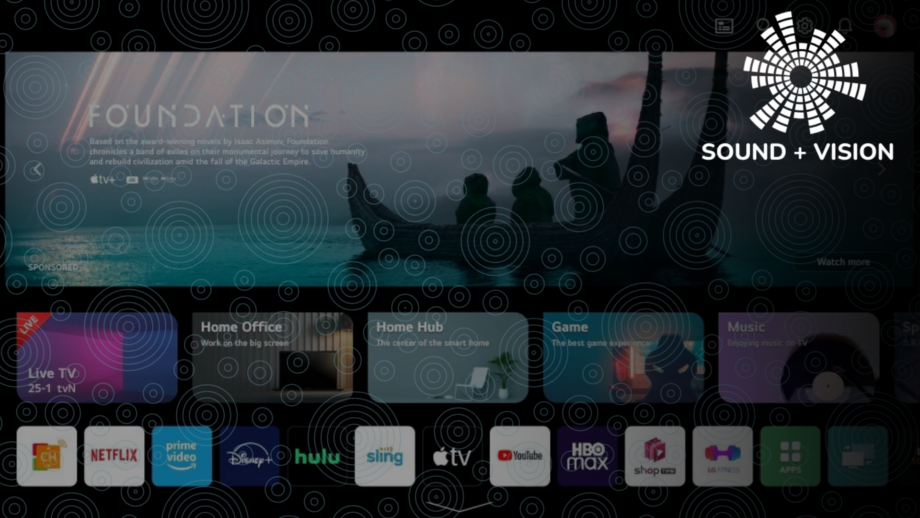Sound and Vision: LG’s webOS shows user interfaces are the next frontier for TVs

OPINION: There will be plenty of news coming out of the CES trade show in Las Vegas in the coming days, but would you have ever thought that user interfaces would be grabbing some of the spotlight?
Probably not, but for TV manufacturers, user interfaces have become an increasingly important means of shaping the TV experience. Access has been a key learning coming out of the pandemic – it’s not just good to have lots of content but to make it easy to find too.
And user interfaces shape and guide that experience. Picture quality is often subjective and informed by your needs and wants, but a slow and horrible user experience will turn you (and the TV) off in an instant.
Take LG as an example. It has been quite vocal these past few years about extending the reach of its webOS service – and it is a service more than anything else these days. It has talked about licensing it to other TV manufacturers, and just before CES 2024, it announced that it was bringing its latest version to their 2022 models. Your TV won’t get any brighter or the sound any better after you’ve purchased it, but the way you interact with it can be improved.

That’s further emphasised by ensuring that anyone who buys an LG webOS TV in 2024 will have access to five years of platform updates. That’s the kind of thinking prevalent in the mobile market, constantly evolving the experience so, quite possibly, you’ll end up with a different TV experience than when you first bought it. That doesn’t mean it’ll be an additive experience – TV makers can giveth and taketh away quite easily. And new interfaces aren’t always a great thing to have in older models, sometimes they can slow things down to the detriment of that intuitive experience.
Another TV brand I’m not allowed to reveal its plans just yet (but should be announced around CES time) is on a similar path. For that brand it’ll be about personalising the experience, expanding the ecosystem of devices for ‘connected experiences’ with the user interface tying it all together like a Persian rug.
And the market for user interfaces is hotting up like you’d never believe. There’s an interface war brewing because once you’ve attracted an audience, they’ll potentially be more likely to stick with it on other devices.
Amazon is shifting from its Android-based Fire TV to developing its own. Google TV is finally making its push to replace Android TV, VIDAA is expanding its reach, TiVo is looking to make a splash in the UK market very soon, and of course, there’s Roku and its range of devices. Even Sonos is rumoured to be bringing its own streaming box to the market later in the year. Everyone is looking to capture and tie you down to their own platform.
And the best way to do so? Through free content. There’s Samsung TV Plus, LG Channels, The Roku Channel, Freevee, Pluto TV, and much more. You may have noticed that these channels are gaining a bigger prominence within various user interfaces as linear broadcast goes the way of the dodo and streaming becomes the de facto way of enjoying content. It’s not just Netflix, Disney+, and Prime Video vying for attention, you can lump in all these services too.
And of course, there’s the presence of advertisements. For now they don’t encroach too much on the experience but it’s not unlikely that in the future a TV brand will look to sell more advertising space, ads targeted to your specific tastes, to build a better picture of who you are. Don’t doubt that there is plenty of money to be made from these interfaces. They’re the new frontier, and every TV brand will start to emphasise its importance in the years to come.
So the next time you think about purchasing a TV, the decision might not be down to how affordable it is, or how many nits of brightness it can reach or what gaming features it has. You might also have to consider how good the UX (user experience) is and whether it’ll keep you invested in your TV for years to come.








